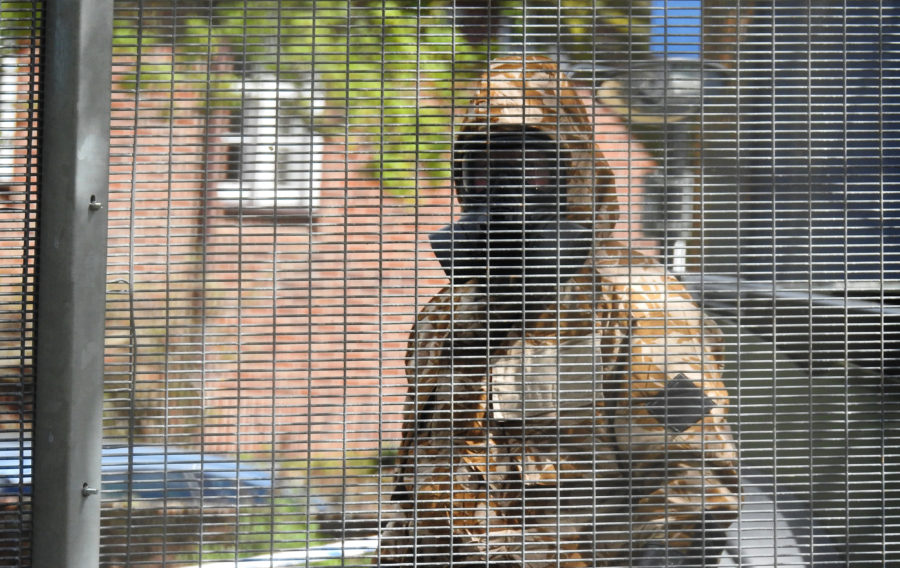
In this feature John Baker, Head of Global Operations for the National Security and Resilience Consortium, and Colin Self, Emeritus Professor of Diagnostic and Therapeutic Technologies at the University of Newcastle upon Tyne’s Institute of Cellular Medicine and CEO of Selective Antibodies Ltd, examine the risk of bio threat to both global security and the UK’s national security.
As countries threaten one another with nuclear destruction, civil war continues to rage in Syria and chemical warfare agents are used on the UK mainland, we should not lose sight of the clear and present danger posed by the significant probability of large and lethal modern-day pandemics occurring in our lifetimes.
Emeritus Professor Colin Self, co-author of this feature, agrees: “Even without the help of rogue states we are on a cliff edge with respect to crashing back to Victorian times – the slightest puncture wound might spell death, a great majority of surgical operations might be deemed too dangerous to conduct without adequate antibiotic cover, and people might have to quarantine themselves away.”
Charles Farr has been the Chairman of the Joint Intelligence Committee and Professional Head of Intelligence Assessment at the Cabinet Office since December 2015. He has been at the forefront of the UK’s national security and resilience strategic planning for many years. Prior to his current role he was Director of the Office for Security and Counter-Terrorism. During that appointment he recognised that extremists have ever greater access to the information and technology required to create and spread infectious agents or other biological weapons.
An official assessment at that time suggested that countering the threat to the UK from international terrorism was becoming harder and more expensive; with a warning that Islamic terrorist threats are now spread more widely across the world, requiring ‘very significant resources’ to combat. Security officials and intelligence agencies believed long before the recent Salisbury Novichok nerve agent attack that a priority for Britain was to improve its ability to detect biological attacks, treat victims and decontaminate attack sites.
“Biological attacks are easier than those involving other forms of weapons of mass destruction,” said Mr Farr, “as there is a greater availability over the internet of advice on how to use biological materials than other forms of WMD.”
During a briefing in Munich earlier this year, Defence Correspondent for the Daily Telegraph Ben Farmer heard Bill Gates explain that in his view bioterrorists could one day kill hundreds of millions of people in an attack more deadly than nuclear war. This is because rapid advances in genetic engineering have opened the door for small terrorist groups to tailor and easily turn biological agents into weapons.
He believes a resulting disease pandemic is currently one of the most deadly threats faced by the world, yet in his view many governments are complacent about the scale of the risk. These should be addressed in the same way as climate change or preparedness for war.
His view is that given “the naivety of the population, and with no real preparations” the next deadly pandemic “could originate on the computer screen of a terrorist.” And although natural epidemics can be extremely large, intentionally caused epidemics – bioterrorism – would be the largest of all.
“With nuclear weapons, you’d think you would probably stop after killing 100 million. Smallpox won’t stop,” warned Gates.
Developments in genetic engineering have been proceeding at an incredible rate; and whereas biological warfare ambitions were once limited to a handful of nation states, they are now open to small groups with limited resources and skills.
Emeritus Professor Self, speaking in May 2018, commented: “The incredible speed of technological advance in the biosciences means that highly complex technological manipulations, only possible by the most sophisticated research centres in the world, can, a decade or so afterwards, be undertaken by sixth form students in the most modest of facilities. Ensuring global leaders genuinely understand the consequences of this, which is so outside their normal areas of expertise and experience, is a major challenge that has to be overcome.”
The increasingly common use of gene-editing technology would make it difficult to spot any potential terrorist conspiracy, due to mass application and the relative ease in reading DNA sequences and altering them to rewrite or tweak genes disguised within a multitude of legitimate uses – unlike the rather more noticeable actions of someone seeking out, say, plutonium. However, the consequences, along with our preparedness, would be only too clear to see.
As Gates further remarked: “The potential death toll from a disease outbreak could be higher than other threats such as climate change or nuclear war.”
By tailoring the genes of a virus, it would be possible to manipulate its ability to spread and its ability to harm people, even to target specific ethnic groups.
The deadliest outbreaks could, as with the ‘Spanish flu’ pandemic of 1918-20, involve the humble flu virus. It would be relatively easy to engineer a new flu strain combining qualities from varieties that spread like wildfire with varieties that are deadly. By comparison, the recent Ebola outbreak in West Africa killed just over 11,000, with the global response to that event being woefully slow.
The Spanish flu pandemic was an unusually deadly influenza outbreak and the first of the two pandemics involving the H1N1 influenza virus. It infected 500 million people around the world, including people on remote Pacific islands and in the Arctic, and resulted in the deaths of 50 to 100 million (three to five per cent of the world’s population), making it one of the deadliest natural disasters in human history.
Disease had already greatly limited life expectancy in the early 20th century. In the first year of the pandemic, life expectancy in the United States dropped by about 12 years.
And whereas most influenza outbreaks disproportionately kill children, the elderly and already weakened patients, the 1918-20 pandemic predominantly killed previously healthy young adults.
There are several possible explanations for the high mortality rate of the Spanish flu pandemic. Some research suggests that the specific variant of the virus had an unusually aggressive nature. One group of researchers recovered the virus from the bodies of frozen victims, and found that transfection in animals caused rapid progressive respiratory failure and death through a cytokine storm (overreaction of the body’s immune system). It was then postulated that the strong immune responses of young adults ravaged their bodies, whereas the weaker immune system reactions of children and middle-aged adults resulted in fewer deaths among those groups.
More recent investigations, mainly based on original medical reports from the period of the pandemic, found that the viral infection itself was not more aggressive than any previous influenza, but that special circumstances – malnourishment, overcrowded medical camps and hospitals, poor hygiene – promoted bacterial superinfection that killed most of the victims typically after a somewhat prolonged death-bed.
The recent Novichok attack on mainland Britain demonstrates the willingness of some to use lethal chemical or biological agents. These can be highly sophisticated, manufactured by skilful chemists or biological scientists and delivered by terrorists or state-sponsored operatives. However, smallpox or flu could be produced relatively easily in a highly virulent form.
The UK Government is investing considerable resource in contingency planning for a potential flu pandemic in the UK through the National Framework for Responding to a Pandemic Influenza, infection control guidance, and the Chief Medical Officer’s guide for health professionals and the public: https://www.gov.uk/guidance/pandemic-flu.
In addition, the Health and Safety Executive (HSE) has developed general guidance for employers and employees to use if the Chief Medical Officer declares a pandemic flu within the UK: www.hse.gov.uk.
In summary
The things needed to protect against a naturally occurring pandemic are the same things needed to prepare for an intentional biological attack:
- Nations must amass an arsenal of new weapons to fight such a disease outbreak, including vaccines, drugs and diagnostic techniques.
- Being able to develop a vaccine as soon as possible against a new outbreak is particularly important and could save huge numbers of lives. For example, scientists working at the Gates Foundation believe it typically takes up to a decade to develop and license a new vaccine. To halt a deadly airborne disease outbreak, that would need to be cut to as little as 90 days.
- The need to stop a disease epidemic is so important that countries should prepare for it as they currently prepare for war, complete with large exercises and drills.
Images courtesy of Amani A / Shutterstock.com
If you would like to join our community and read more articles like this then please click here.







